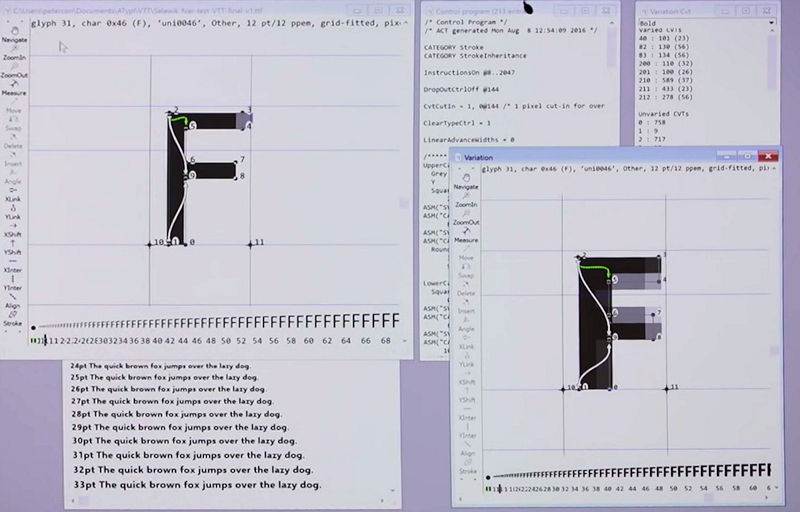
On Microsoft’s Typography blog the company announced a new OpenType specification developed with industry leaders Adobe, Apple, and Google, with input from independent font and tool makers.
OpenType Font Variations enables web site designers and application developers to deliver typographically rich experiences while using very little network bandwidth and small font files. Variable fonts will also give document creators a broad palette of typographic features without having to manage hundreds of font files. OpenType Font Variations provide all the weights and styles of a full font family in a single, compact file to improve applications size and web site responsiveness.
A variable font file for example supports more than typical font instances like bold and condensed: it also can generate a smooth continuum of styles between them (e.g. semi-semi-bold, or very-slightly-condensed). This means web sites can make fine adjustments font width to fit headlines to column widths without wrapping or ugly whitespace; applications can adjust fonts to match the pixel density of devices, creating an excellent looking design from low resolution monitors to smartphones. Read more about its many uses -.
Microsoft and its collaborators hope that OpenType Font Variations will create a new font platform on which developers and designers can create a new level of typographic richness while also providing better solutions for their customers.
The Windows engineering team at Microsoft is actively engaged in implementing platform support for OpenType Font Variations for release in an update to Windows (likely Redstone 2) in 2017. Some very-limited functionality is already present in the Windows 10 Anniversary Update, and more complete functionality will be visible in Windows Insider preview builds in the coming months.
The specification of OpenType Variations is available in the 1.8 version of the OpenType specification.
See a video introducing the technology at Atypl below:
[embedded content]
Switch To Next Tab







